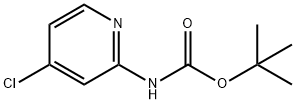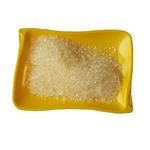Chemical Properties
Light yellow Cryst
Uses
2-Amino-4-chloropyridine is a useful precursor that could be used to synthesize 2-amino-4,5-dichloropyridine, 2-amino-3,4-dichloropyridine, and 2-amino-3,4,5-trichloropyridine[1].
Synthesis Reference(s)
The Journal of Organic Chemistry, 72, p. 4554, 2007
DOI: 10.1021/jo070189y
Synthesis
Methyl 4-chloropicolinate hydrochloride in methanol was treated with hydrazine hydrate, resulting in the formation of a precipitate. The suspension was then stirred for 2 hours and the precipitated hydrazide was collected through filtration. The hydrazide was dissolved in 1N hydrochloric acid and the solution was cooled to a temperature between 0-5 ℃. A solution of sodium nitrite in water was then added dropwise, causing another precipitate to form. After stirring for 15 minutes, the precipitate was collected by filtration and washed with water. The moist precipitate was then combined with a mixture of acetic acid and water, and the resulting solution was heated in a steam bath until gas evolution stopped. The reaction mixture was cooled to room temperature, the pH was adjusted to 7, and the resulting precipitate was collected via filtration. Recrystallization using ethanol yielded 2-Amino-4-chloropyridine in the form of a white crystalline solid[1].
References
[1] Gudmundsson, Kristjan S. , et al. "An Improved Large Scale Synthesis of 2-Amino-4-chloropyridine and Its Use for the Convenient Preparation of Various Polychlorinated 2-Aminopyridines." Synthetic Communications 27.5(1997):861-870.





